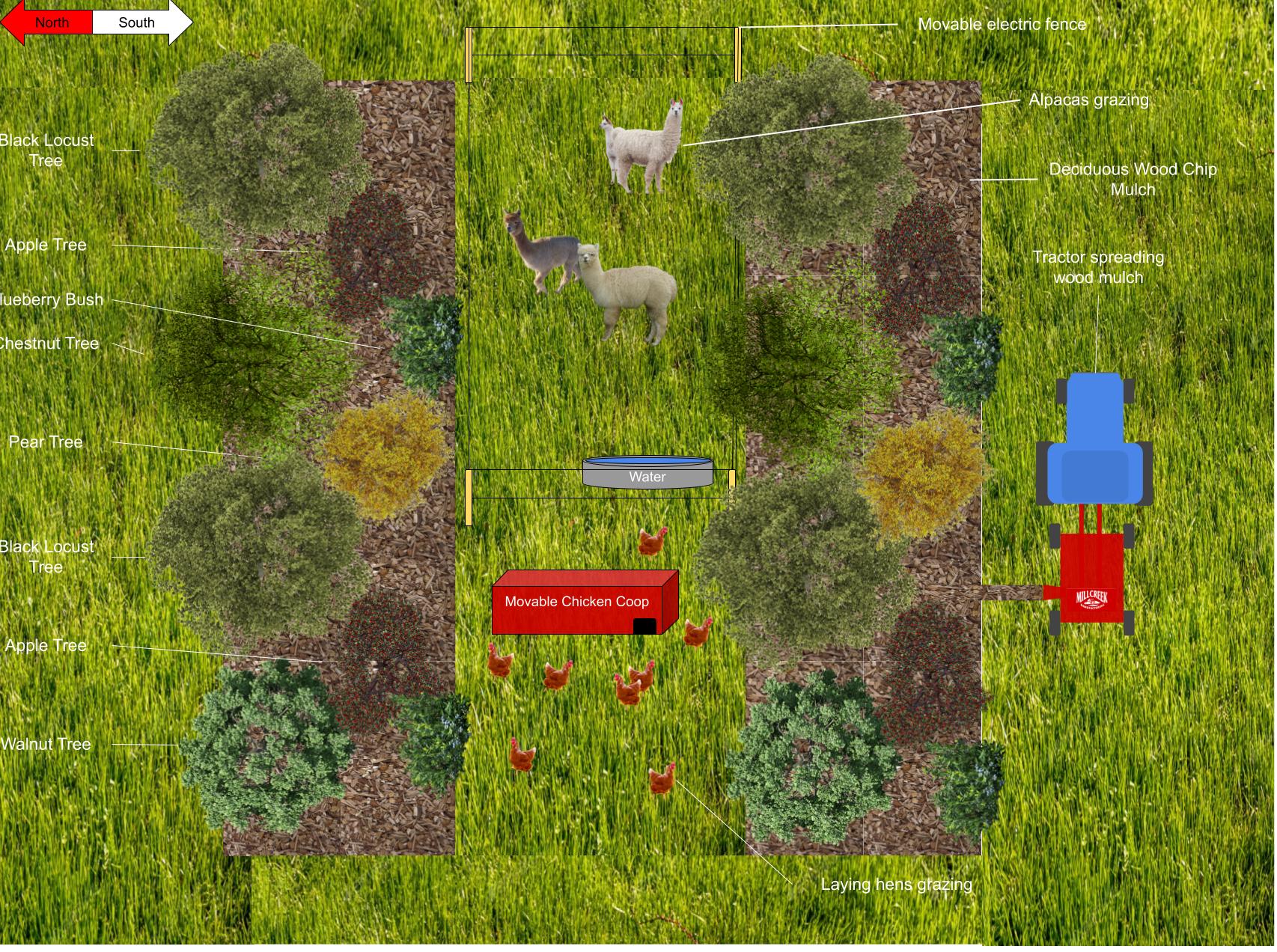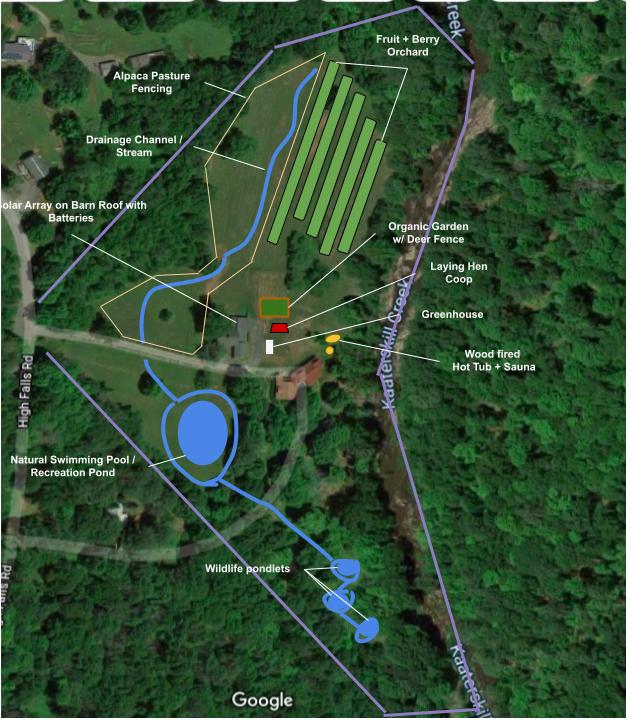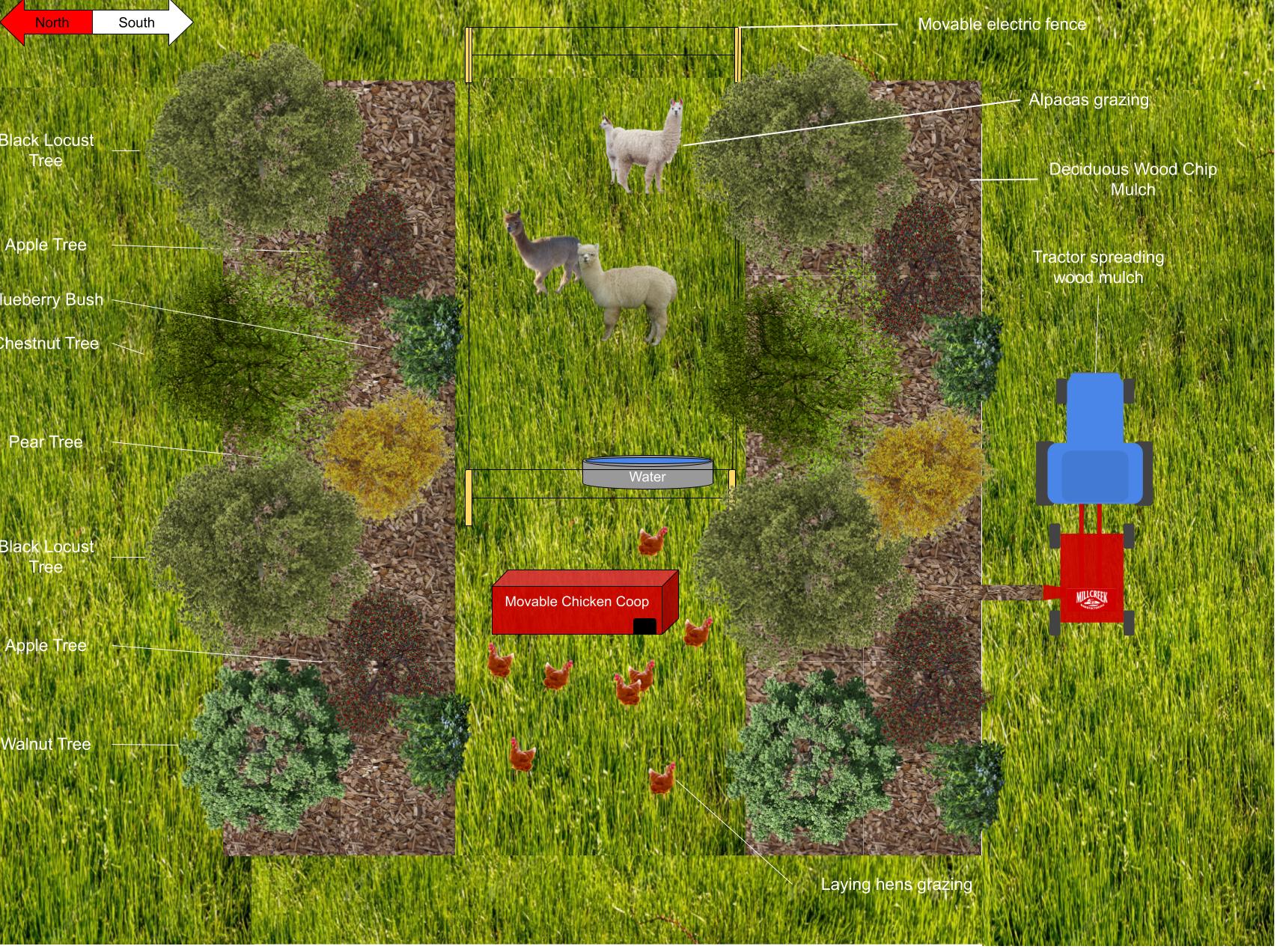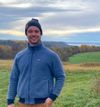Permaculture Farm Adventure - The Ideas Phase
We're here! At our new farm in Catskill, NY! I have a lot of ideas about what I want to include in our regenerative permaculture farm, all of them gleaned from Internet study, book learning, and classes I've taken. And I want to get them out "on paper" – before we put them out on the land.

We're here! At our new farm in Catskill, NY! I have a lot of ideas about what I want to include in our regenerative permaculture farm, all of them gleaned from Internet study, book learning, and classes I've taken (like the Mastodon Valley Regenerative Farm Design Class). And I want to get them out "on paper" – before we put them out on the land.

The image above is what I showed Andrew Faust when he visited, exactly one week after we'd gotten the keys to our new place. Andrew is a deeply experienced permaculture and natural building educator and consultant, and I'm signed up for his Permaculture Design Certification class this winter as well. Thanks to his help on our walk through the property, we are going to avoid a lot of mistakes the above sketch would have made – but we're still charting a course towards something like that vision in the long term. To get started, in January he is going to come with a digger and clear out a ditch plus create a little wildlife pond to help with drainage in what will eventually be the orchard. He's also going to help us figure out how to tap all our sugar maples, and I'm sure much more. So excited to be working with and learning from him!
Restoration Agriculture Savannah Ecosystem Design
Mark Shepherd's Restoration Agriculture is a huge inspiration for me. People talk about restoring ecosystems all the time, but the question is – restore it to what? For a lot of folks, the answer is "just don't do anything to it, let nature run it's course." But this isn't quite right – it doesn't create the most productive ecosystem possible. The idea that we should return ecosystems back to where they were pre- colonialism is right on– in fact, it's a key to our survival. But the vast landscapes of America were actually very carefully managed by indigenous people for millennia. They were not "untouched wilderness;" they were more like continent scale permaculture orchards.
One of the keys to this management was maintaining "savannah ecosystems" – hybrids of forests and grasslands. Left untouched, land would tend towards either dense forest, or treeless grassland (depending on local precipitation). Instead, millions and millions of acres of N. America was managed to be the more productive hybrid ecosystem, the savannah. This is neither pure forest nor pure grassland, but a combination where wide meadows of grass are punctuated by large stands of trees. By transitioning constantly from grassland to forest and back again, savannah ecosystems create more surface area for photosynthesis and encourage more densely packed biodiversity. Optimizing photosynthesis surface area with grass between rows of brambles, shrubs, medium trees, and canopy trees creates a higher baseline productivity for the land. It also requires active management, especially controlled burns, as well as the integration of keystone species like bison.
How does this translate to a design idea for an 11.5 acre farm in Catskill NY? As a way of arranging rows of productive perennials to share sunlight, for one thing. In the above image, the sun would be coming from the right hand side of the frame, so all the plants would get plenty of light without shading their neighbors too much. By planting them in ascending order of height, from South to North, you maximize the surface area of the perennial photosynthetic mass – just like a slanted solar panel facing south.
Perennial Nitrogen Fertilization
Stefan Sobkowiak's documentary The Permaculture Orchard: Beyond Organic is an awesome soup-to-nuts system for running a productive commercial orchard. He introduces a lot of ideas, some of them I love. One of those is the idea of planting in trios to get perennial nitrogen fertilization for your fruit trees. Check out this youtube video introducing trios.
Andrew Faust told us that Black Locust is a nitrogen fixing tree, that also is prized for its wood. The wood is resistant to rot, so great for things like fenceposts, and it is the hottest burning firewood by 3x! Also, according to some Google results, it responds well to coppicing – meaning you can harvest some or all of the tree trunk and get re-growth from the live stump for more growth and harvest in later years. I think we're going to be planting a lot of black locusts along with our fruit trees!
Combining Trios and Savanna Design
I would love to be able to combine the perennial nitrogen fixing concept into the savanna ecosystem design concept. Below is one design for making this work.

I want to incorporate chestnuts, whereas the Restoration Ag model usually calls for oaks – but my hope is they can play the same role of nut producing tall canopy trees.
One issue I foresee with this design could be physically getting to the fruit trees for harvest. I tried to make that a bit easier by not including quite as many berry bushes as there potentially could be, instead leaving every other opening between apple and pear clear. Hopefully this allows for enough access for harvest and maintenance. It is also important to mention that pruning everything to stay within its intended area is going to be a very important part of keeping this design viable. Otherwise it could close down into impenetrable thicket pretty quickly.
I'm eager to get some opinions on this concept and keep iterating!
Multi-Species Follow Grazing
For any system that wants to mimmic nature and avoid expensive and intensive inputs (like fertilizer and pesticide), incorporating animals on the landscape is a must. And, from what I've read, intensive rotational grazing ("mob" grazing) with multi-species follow systems is the best way to maximize the overall health of the ecosystem, as well as the yield for the farmer. It turns out this is not an uncommon practice, but I was first introduced to the idea in Joel Salatin's The Sheer Ecstasy of Being a Lunatic Farmer. I've learned a lot more about from a lot of sources, including Gabe Brown, Mark Shepherd, and the Mastodon Valley Design Course.
The classic multi-species rotation starts with the cows getting let into new pasture. This is part of a high-intensity grazing strategy, so the cows would be kept on a small plot of fresh grass for only ~24hrs. Then you let in the goats, who eat all the spiky stuff the cows don't touch, and the sheep, who eat all the bottoms of the grass the cows don't prefer. After the grass is basically mown down to a lawn, you bring in the chickens in a chicken tractor. The shorter grass makes it easier to move the tractor and lets the chickens easily catch bugs. Plus the 2 - 3 day old cow pies are now full of fly maggots. The chickens can eat the maggots, which provides free chicken feed while keeping fly pressure down. And their maggot scavenging process spreads the cow manure evenly across the field. After the ~5 day intensive animal presence, the land is left for at least 45 days (depending on season, location, weather, etc) to recover and make use of all the new amazing nutrient availability provided by the animals.

This mimics how natural ecosystems cycle nutrients and make use of all available animal forage. As an agriculture practice, multi-species follow grazing lets a farmer replace buying fertilizer and animal feed with a bit of extra animal movement. It also has a reputation for being the fastest way to increase soil carbon levels in agricultural ecosystems.
Ally Grazing
Mark Shepard does the multi-species follow grazing in the grass "alleys" between the multi-layered perennial forest strips of the savannah design. This replaces mowing – which most orchards require constantly – with a deep fertilization from animal manure.
Alpacas
We are not going to have cows at our place, or do quite the full-on 4+ species follow grazing system – not quite enough space, and we're not under commercial productivity constraints. But we are hoping to experiment with alpaca rotational grazing!
Alpacas are ruminants, meaning they have a bunch of stomachs with cellulose eating bacteria in them (like cows, sheep, goats, deer, etc) – which is a crucial part of the ecosystem formula. You gotta have those good ruminant bacteria in the manure for the magic to happen! But alpacas are smaller than cows, and are one of the only domesticated ruminants actually indigenous to the American hemisphere! Plus, they are super cute, supposedly easy to keep, and produce luxurious fleeces. Very excited to start learning more about these guys!

Holistic Orchard Mulch and Integrated Pest Management
I am still digging into Michael Phillip's Holistic Orchard book, but one thing that immediately stood out to me is the importance of mulch for fertility and disease management. A woody mulch, preferably from deciduous trees, provides weed suppression, the perfect nutrient balance for fruit trees, and – crucially – habitat for symbiotic mycorrhizal fungi to thrive. New application of woody mulch at the right time in the fall also covers spores of "bad" fungi like scab that cause disease and damage fruit, suppressing next year's harmful spreading.
It seems like every orchardist has very strong opinions on how to mulch. If you watch the Permaculture Orchard documentary, you'll see that Stefan Sobkowiak actually recommends plastic mulch for orchards, since it is permanent and easy to maintain. I respect his commitment to using tractors as little as possible and doing everything by hand, on a pretty big orchard no less, but, honestly, I hate the way the plastic looks. I much prefer what I saw at the Cuddy's Blueberry Farm in terms of mulch systems and management.


The Cuddys put a new layer of mulch at the foot of their blueberries every fall. This year John said he got his hands on his favorite type of mulch, red oak chips. The MillCreek Row Mulcher gets pulled behind the tractor and spews wood chips out the side in a neat row. It keeps things looking tidy, while delivering the mulch where its needed quickly. I love the idea of pulling this thing along behind the electric tractor I'm considering buying to add a good mulch every winter!
--
These are some of the inspirations I'm bringing into this process. We'll see where they lead, but for now, time move beyond theory and start making real plans for the real farm that we're really on! More on that soon –
K9
